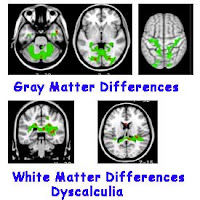-A learning disability is a neurological disorder.
-A Learning disability affects the brain's ability to receive, process, store, respond to, and communicate information.
-LDs are actually a group of disorders, not a single disorder.
-A Learning disability is any one of a heterogeneous set of learning problems that can affect the acquisition and the use of listening, speaking, writing, reading, mathematical and reasoning skills.
-Learning disabilities are common, affecting between 4% to 6% of school age children.
What causes a learning disability?
--The exact cause of a learning disability is unknown. However it is thought it could be caused by heredity, problems during pregnancy and/or birth, and incidents after birth.
Heredity factors:
--Thought to be caused by family environment
Problems during pregnancy and delivery:
--Umbilical cord being wrapped around the neck cutting off oxygen
--Mother's immune system attacking the fetus as if it were an infection
--Mother smoking can cause low birth weight which is linked to learning disabilities
--Mother's alcohol consumptions mutates developing neurons
--Mother's drug consumption can cause problems in neuron receptors
Incidents after birth
--Serious illness
--Head injuries
--Poor nutrition
--Exposure to toxins can affect the growth of new brain cells and neurons
Signs that may indicate a learning disability
--Preschool
- Speaks later than most children
- Pronunciation problems
- Slow vocabulary growth, often unable to find the right word
- Difficulty rhyming words
- Trouble learning numbers, alphabet, days of the week, colors, shapes
- Extremely restless and easily distracted
- Trouble interacting with peers
- Difficulty following directions or routines
- Fine motor skills slow to develop
 |
| www.buzzle.com |
- Slow to learn the connection between letters and sounds
- Confuses basic words (run, eat, want)
- Makes consistent reading and spelling errors including letter reversals (b/d), inversions (m/w), transpositions (felt/left), and substitutions (house/home)
- Transposes number sequences and confuses arithmetic signs (+, -, x, /, =)
- Slow to remember facts
- Slow to learn new skills, relies heavily on memorization
- Impulsive, difficulty planning
- Unstable pencil grip
- Trouble learning about time
- Poor coordination, unaware of physical surroundings, prone to accidents
- Reverses letter sequences (soiled/solid, left/felt)
- Slow to learn prefixes, suffixes, root words, and other spelling strategies
- Avoids reading aloud
- Trouble with word problems
- Difficulty with handwriting
- Awkward, fist-like, or tight pencil grip
- Avoids writing assignments
- Slow or poor recall of facts
- Difficulty making friends
- Trouble understanding body language and facial expressions
- Continues to spell incorrectly, frequently spells the same word differently in a single piece of writing
- Avoids reading and writing tasks
- Trouble summarizing
- Trouble with open-ended questions on tests
- Weak memory skills
- Difficulty adjusting to new settings
- Works slowly
- Poor grasp of abstract concepts
- Either pays too little attention to details or focuses on them too much
- Misreads information
--Spoken language-listening and speaking
--Written language-reading, writing, and spelling
--Arithmetic-calculation and concepts
--Reasoning-organization and integration of ideas and thoughts
Signs that do not indicate a learning disability:
- Although the following may contribute to an already present disability, or facilitate a new difficulty, they are not the cause of a learning disability.
- A learning disability does not include problems that result primarily from mental retardation, or emotional disturbance
- A learning disability does not include problems primarily due to auditory, visual or motor disabilities
- A learning disability does not include problems that result from economic, cultural or environmental difficulties
Resources:
http://www.ldonline.org/ldbasics/signs
http://www.ncld.org/types-learning-disabilities/what-is-ld/what-are-learning-disabilities
http://www.ldav.ca/brain_development.shtml










